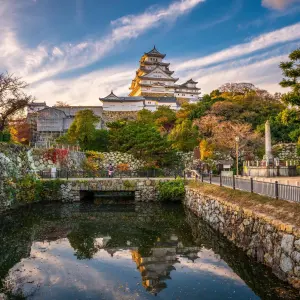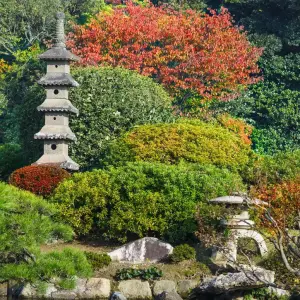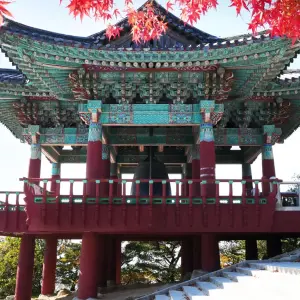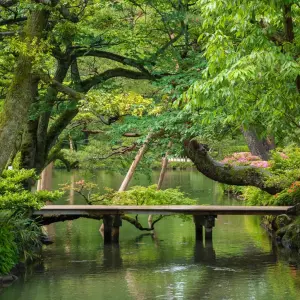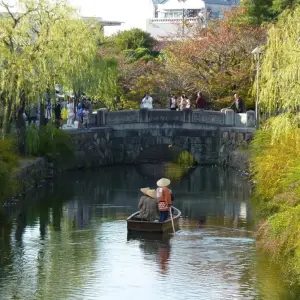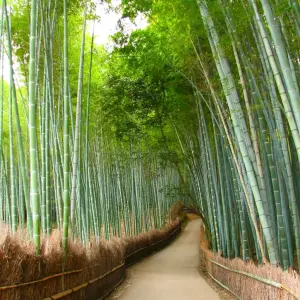Coastal Japan: Imperial Dynasties and Modern Culture
Lindblad Expeditions | 16 Days | Osaka to Kyoto
September 2026 Departures
Step back in time on a voyage into Japan’s riveting history, from the storied castle towns of the Edo period to the elegant shrines and merchant districts of the Meiji era to the poignant sites of World War II. Venture into the homes of samurai and feudal lords and discover exquisite centuries-old gardens and temples. Take a detour to South Korea to discover the ancient city of Gyeongju and explore Japanese artistic traditions of the past and present.
AAA Member Benefits and Special Offers:
- Member Benefits
- Up to $200 shipboard credit per cabin
Highlights
- Meander through Koraku-en and Sengan-en, two unique Japanese gardens that are considered some of the most beautiful in the country
- Explore the cultural legacy of Korea’s Silla Dynasty among the ancient ruins of Gyeongju, a UNESCO World Heritage site
- Get inspired on the art-filled island of Naoshima and visit museums and studios dedicated to artists and traditional handicrafts in Matsue
- Learn about the historic past and modern day lives of the Geisha – the treasures of Kyoto
- Delve into the history of the samurai and their feudal lords while visiting castles and samurai districts in Matsue and Uwajima
Day 1: Osaka, Japan
Arrive in Osaka and transfer to your hotel.
Day 2: Osaka - Embark Ship
After checking out of the hotel, travel to Himeji Castle, one of Japan’s most spectacular. Also known as “White Heron Castle,” this UNESCO World Heritage site is at once imposing and elegant. Following lunch, transfer to the National Geographic Resolution for embarkation.
Day 3: Naoshima - Okayama - Kurashiki
This morning, take a short ferry ride to Naoshima Island, which was converted into a hub for art and artists by the Benesse Corporation in 1992. Naoshima is an eclectic mixture of nature, art and architecture–you’ll discover famous works, like Yayoi Kusama’s Yellow Pumpkin, displayed in unexpected places.
This afternoon, choose to visit Okayama, home to Korakuen Garden, one of the three best landscape gardens in Japan. Stroll the elegant garden paths, enjoying the beauty and the views of Okayama Castle and its impressive black silhouette. You may also choose to walk along Kurashiki’s lovely canal, lined with beautifully preserved storehouses now selling locally made handicrafts, or visit the Ohara Museum of Art and the Ohashi House, an example of a wealthy merchant’s home from the 18th century.
Day 4: Takamatsu
Early this morning, sail to Takamatsu on Shikoku Island. Explore Shikoku Mur, an open-air museum that showcases traditional building styles. Learn how people lived during the Edo and Taisho eras. Visit Ritsurin Garden–earning three stars in the Michelin Green Guide, it is one of the most beautiful gardens in all of Japan. End the day at Kinashi Bonsai Town, dedicated to the art of pine tree bonsai.
Day 5: Miyajima - Hiroshima
Start the day on the island of Miyajima, home of Itsukushima Shrine, a UNESCO World Heritage site famed for its red torii gate that seems to float atop the water at high tide. In Hiroshima, visit the Peace Memorial Park, see the Atomic Bomb Dome, one of only a few buildings left standing after the attack and learn about the city’s dedication to peace following World War II.
Day 6: Uwajima - Uchiko
Rise early for a morning hike to Uwajima Castle, one of just 12 original Edo-period castles that remain intact. Continue to Uchiko, once a center of wax production. Take a walk in the town’s well-preserved Yokaichi district, where beautifully crafted wooden merchant homes recall the prosperity of the Meiji period.
Day 7: Yakushima Island
The diverse ecology of Yakushima Island, including a subtropical coast and temperate rainforest in the interior, has earned this island World Heritage status. On a hike, discover the island’s ancient Yakusugi cedar trees, many of which date back more than a thousand years. Back on board the ship in the evening, head north toward the island of Kyushu.
Day 8: Kagoshima
At the southern end of Kyushu, the city of Kagoshima sits just across the bay from the active volcano Sakurajima. Take a walk in Sengan-en Garden, designed by the city’s ruling Shimadzu clan in 1658 to incorporate the bay and its simmering volcano. After lunch, travel along the Satsuma Peninsula to the village of Chiran, where the samurai designed gardens inspired by their travels.
Day 9: Nagasaki
Long before World War II, Nagasaki was a cosmopolitan trading center, drawing merchants from Europe and China to its picturesque harbor as early as the 1500s. Visit Oura Cathedral, the oldest Christian church in Japan and venture into Sofukuji, a 400-year-old Ming-style Zen Buddhist temple. Visit Nagasaki Peace Park, where a poignant exhibition illustrates the aftermath of the atomic bomb attack on the city, and see the somber monument erected at ground zero. This afternoon, chart a course for the Korean Peninsula.
Day 10: Ulsan, South Korea - Gyeongju
Dock in Busan and travel to Gyeongju, the ancient capital of the Silla kingdom and the crown jewel of Korea’s cultural heritage. Packed with the ruins of temples, pagodas and palaces dating back more than a thousand years, the historic areas of the city have been collectively designated a UNESCO World Heritage site. Visit Bulguksa Temple, a masterpiece of Silla architecture originally built in A.D. 528. At the Gyeongju National Museum, examine jewelry, weapons and other Silla artifacts. See Cheomseongdae, a seventh-century observatory and wander among towering royal burial mounds.
Day 11: Matsue, Japan
Sail up the coast to Matsue, situated between a lake, a lagoon and the sea. Tour the 17th-century Matsue Castle built as a defensive fortress and discover its clever design elements intended to foil the enemy. Continue to the Adachi Museum of Art, which blends an impressive collection of 20th-century Japanese art with a gem-like traditional garden.
Day 12: Moji
With its location in line with the route from Honshu to Shanghai, Moji has a long history as a prominent trading post. The bustling modern day ship traffic has moved to another port, leaving Moji with a slower pace. You’ll have the opportunity to step back in time and stroll the promenade, exploring the well-preserved buildings of the Meiji and Taisho periods. Moji is also known for its limestone caves. You will pass through a cedar grove to enter one of Japan’s largest limestone caves: Akiyoshidai. Exploring this cave, you’ll only touch a very small corner of the national park that spans 100 meters underground.
Day 13: Mitarai
Located in the Seto Inland Sea, Mitarai is a seaside village that did not get swept up with all the changes and development that the 20th century brought. The traditional wooden buildings and narrow streets date back to a traditional past. The mature gardens add even more beauty and serenity to the sheltered bay. Explore this hidden gem that has been designated a Historic Preservation District of Traditional Architecture.
Days 14-15: Osaka - Disembark Ship - Kyoto
Upon disembarkation, transfer to Kyoto. Once the capital of Japan, this beautiful city still holds many of the Japanese traditions very dear. It’s a unique blend of modern day and ancient culture that has been refined over the last 1200 years. Spend two days exploring an array of sites, including the impressive Torii Gates of Fushimi Inari Shrine; Nishiki Market with its assortment of beautiful fresh foods; Higashiyama District one of Kyoto’s best preserved historic districts; and the soaring stalks of bamboo in Arashiyama. No visit to Kyoto is complete without a glimpse into the secret life of the Geisha as you learn about the customs and experience a traditional ceremony.
Day 16: Kyoto - Osaka
Following breakfast, check out of the hotel and transfer to the airport for flights home.
All pricing and offers for accommodations and other non-air travel are per person, based on double occupancy, capacity controlled and subject to availability and change without notice. Pricing does not include taxes, fees, fuel surcharges, gratuities, resort fees, or airfare unless otherwise noted and is valid on new bookings only. Prices, fees, and other restrictions are subject to supplier policies. All offers, including but not limited to, bonus amenities, upgrades, prices, and group benefits are based on select dates, resorts, room categories, and/or fare codes. Specialty pricing may require proper identification. Cancellation penalties, blackout dates, and other restrictions may apply. When traveling outside the United States a valid passport is required. It is the sole responsibility of the passenger to have the proper documentation and identification required by the United States and other governments at the time of travel. When passports are required, it must be valid for a minimum of six months past your date of return. AAA strongly recommends the purchase of Travel Insurance. Usage of a credit card for travel arrangements may provide additional protection, please consult your credit card policies. Under certain circumstances the package price may be subject to supplemental price increases imposed by the supplier. Price increases include, but are not limited to fuel surcharges, taxes or fluctuations in foreign exchange markets that may be imposed after the date of purchase. Air-inclusive prices do not include government imposed taxes and fees, including but not limited to a September 11th Security Fee, U.S. or international government imposed taxes and fees, Federal Excise Fees, among others. Some carriers charge additional fees for checked bags, fuel surcharge, meals, etc. Please check the carriers website for details. Air-inclusive pricing is based on select departure cities. Prices from other cities may vary. AAA Oregon/Idaho acts solely as a sales agent for travel suppliers and is not responsible for the actions or inactions of such suppliers. We monitor all of the information presented on our website; however, we do not assume responsibility for any errors or omissions in the content of the offers displayed. Review full Travel Disclosure and Consent at time of booking.
 Click Here to View Your Vacation
Click Here to View Your Vacation
